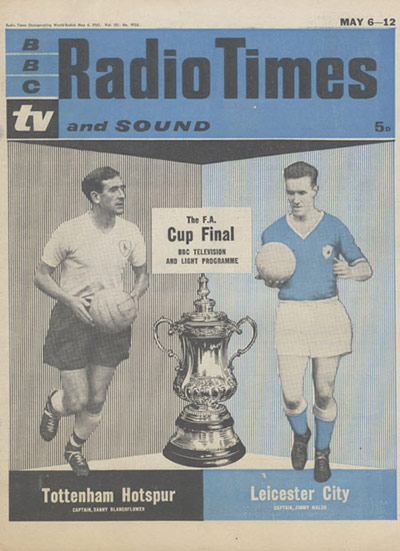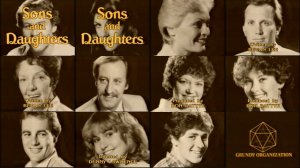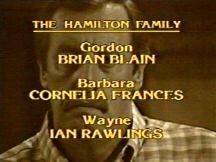
Adapted by Wolf Mankowitz from his own novel, A Kid for Two Farthings was Carol Reed's first colour production, and his last wholly British film until Oliver! some thirteen years later. It's also a very rare example of a genuine Anglo-Jewish film, partly filmed on location in Petticoat Lane in London's East End, at the heart of what was still a thriving Jewish community (whose decline would be recorded a few years later in Robert Vas' 1962 documentary (The Vanishing Street), happily coexisting cheek by jowl with more traditional East End elements.Much of the film's fascination today comes from this background detail, the street market (the location was renamed 'Fashion Street' for the film) being packed with memorable characters: the affectionate Mrs Abramowitz (Irene Handl), blowsy fashionista Lady Ruby (Brenda de Banzie) crooked jewellery salesman Ice Berg (Sid James), finicky tailor 'Madam Rita' (Sidney Tafler) and decrepit shopkeeper Mr Kandinsky (David Kossoff).


It's in the latter's shop that young Joe (Jonathan Ashmore) sees his imagination most heavily stimulated, taking Mr Kandinsky's fables all too literally when he buys a young goat in the mistaken belief that it's a magical unicorn whose powers will transform the lives of Joe and his mother Joanna (Celia Johnson) and grant Mr Kandinsky his longed-for steam-powered trouser-press. That this ultimately fails to happen underscores one of the film's key themes: the loss of innocence that Reed had earlier explored so memorably in The Fallen Idol (1948)

Joe's adventures are counterbalanced by the equally childlike romance of Sonia (Diana Dors) and her body-building boyfriend Sam (Joe Robinson), the latter's misguided involvement with crooked wrestling promoter Blackie Isaacs (Lou Jacobi) adding a further injection of local colour. Like Joe, Sam has a specific material goal in mind, the funding of an engagement ring for Sonia, and while his ambition is somewhat more practical at base, it's also prone to fanciful idealism: the fact that Sam and Sonia have been engaged for four years hints at earlier schemes that have failed to come off.
A Kid for Two Farthings is not one of Reed's more successful films: Joe's fantasies are ultimately more cloying than cute, and neither Ashmore nor Johnson make especially convincing working-class East Enders. But Dors and Robinson are an appealingly convincing couple, and the background detail ensures that the film will last, if only as a whimsical curiosity.
THE
MONTHLY FILM BULLETIN
Published by
THE BRITISH FILM INSTITUTE
Volume 22, No.257, June 1955, page 83-4
KID FOR TWO FARTHINGS, A (1955)
In and around the Petticoat Lane establishment of Kandinsky, a philosophical old Jewish tailor with a fanciful imagination, there moves a colourful assortment of characters. There are Joanna, who boards and works with Kandinsky, and her little boy Joe, a collector of a series of pets, who wonders at the stories Kandinsky tells him about the magic powers of the unicorn; there is Sam, Kandinsky's assistant, a "muscle man" whose ambition is to become "Mr. World", and who is loved by the pretty shop girl Sonia; there is Python Macklin, a fearful and ugly wrestler who goads Sam into a fight; and so on. The life of Petticoat Lane, with its odd mixture of strange and lovable characters, goes on quite peacefully until Joe buys a young kid from a vagrant. The new pet, which Joe, because of its single horn, assumes to be a unicorn, soon begins to exercise its magic powers. Sam fights and beats the dreaded Python and is able to buy Sonia a ring; Kandinsky gets a steam presser for his tailoring establishment; there is even a hint that Joe's father, who has been abroad, may return. When the Kid dies - Joe is unlucky with his pets - Joe quickly gets a new animal, and life in Petticoat Lane goes on as before.
In A Kid for Two Farthings Carol Reed has brought to the screen Wolf Mankowitz's little fable of East End life. Its success in creating a natural and convincing atmosphere of the locality - which is essential to the story - is unfortunately marred by two miscalculations: the colour is harsh and artificial, making the locations too often look like rather indifferent sets; and neither Celia Johnson (Joanna) nor Jonathan Ashmore (the little boy) ever begin to persuade us that they belong to this particular world. (The script explains in an aside that they have only recently moved into the neighbourhood, but this hardly justifies the importation of two such Kensington voices into this milieu.) Carol Reed's direction seems somewhat ill-at-ease with a set of characters who are presented as almost uniformly pleasant and lovable; and the handling, although showing touches of bravura in staging, fails to establish a rhythm which could provide a momentum for this whimsical and, in the context of its realistic surroundings, ambitious story. Isolated sequences-a very exciting wrestling match, a macabre night pursuit of Sonia by the dreaded Python, some casual incidental shots of Petticoat Lane-come over with effect, but the sequences never really fuse into a whole. This is perhaps partly due to a disparity in the acting styles employed. David Kossoff's Kandinsky is a performance making no concessions to the demands of the film screen; Jonathan Ashmore, the little boy, fatally lacks the streak of toughness which the part demands, and this performance shows too obviously the signs of having been pieced together in the cutting room; generally, there is a lack of balance between "natural" and "character" acting. Among the smaller parts, Vera Day makes a striking impression.
The Monthly Film Bulletin was published by the British Film Institute between 1934 and 1991. Initially aimed at distributors and exhibitors as well as filmgoers, it carried reviews and details of all UK film releases. In 1991, the Bulletin was absorbed by Sight and Sound magazine.
























